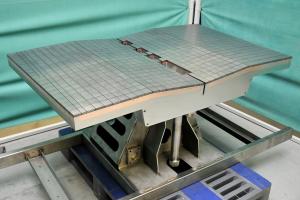Manufacturing kicks off in Europe
The blanket is a modular component consisting of a shield block (for neutron shielding) and a plasma-facing, detachable first wall panel in the front that directly faces the plasma and removes the plasma heat load.
Each of first wall panels measures 1 x 1.5 metres (height x length), and is coated with a 6- to 10-millimetre layer of beryllium armour tiles bonded to a copper alloy heat sink mounted on a stainless steel structure. Of 440 panels required, approximately half are under the procurement responsibility of the European Domestic Agency, Fusion for Energy: 215 normal heat flux first wall panels designed for heat fluxes of up to 2 MW/m². (China and Russia are sharing the procurement of 225 enhanced heat flux panels designed for 4.7 MW/m².)
Fusion for Energy has signed contracts with two consortia—Atmostat-Alsyom, and Fusion Business Leadership (a legal entity made of the Spanish firms Leading and Empresarios Agrupados)—for the production of the first series of panels. Each group will have to set up and qualify its production line, and produce 27 panels plus 3 as part of the pre-series. The production of the rest of the panels to be provided by Europe will materialize through additional contracts that will be awarded from 2024 onwards following a reopening of competition between both consortia.
Stefano Banetta, first wall project manager at Fusion for Energy, has been following the progress of first wall development for the last ten years. "The signature of [these contracts] marks the end of a long period of R&D, during which we collectively refined the manufacturing processes and developed the necessary skills. We are now ready, and very excited, to start manufacturing the real components that will be part of the ITER device."
Read the full report on the Fusion for Energy website.


